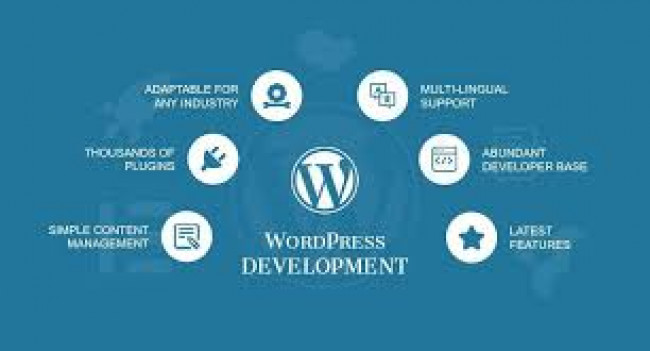
In vitro fertilization (IVF) stands as a beacon of hope for countless individuals and couples navigating the complexities of infertility on their journey to parenthood. With its groundbreaking advancements and remarkable success stories, IVF has revolutionized reproductive medicine, offering a ray of light to those facing challenges conceiving naturally. In this comprehensive guide, we explore the intricacies of IVF, from its scientific foundations to its transformative impact on families worldwide.
Demystifying In Vitro Fertilization:
At its core, in vitro fertilization involves fertilizing an egg with sperm outside the body in a laboratory setting. The process begins with ovarian stimulation to produce multiple eggs, which are then retrieved through a minimally invasive procedure. These eggs are then fertilized with sperm in a laboratory dish, and resulting embryos are carefully monitored and evaluated for viability. Finally, one or more embryos are transferred into the uterus, with the hope of achieving a successful pregnancy.
Who Can Benefit from IVF?
IVF offers hope to individuals and couples facing a range of fertility challenges, including:
Female Infertility: IVF can help women with blocked fallopian tubes, endometriosis, ovulation disorders, or other reproductive health issues achieve pregnancy.
Male Infertility: In cases of male infertility, IVF may involve using donor sperm or advanced techniques such as intracytoplasmic sperm injection (ICSI) to fertilize the egg.
Unexplained Infertility: For couples with unexplained infertility, IVF provides a means to bypass potential barriers to conception and increase the likelihood of pregnancy.
Genetic Conditions: IVF with preimplantation genetic testing (PGT) allows for screening of embryos for genetic abnormalities before transfer, reducing the risk of inherited disorders.
The IVF Process:
The journey through IVF is marked by careful planning, monitoring, and support at every step. Here's an overview of the typical fivet IVF process:
Ovarian Stimulation: Hormonal medications are administered to stimulate the ovaries and promote the development of multiple eggs.
Egg Retrieval: Eggs are retrieved from the ovaries through a minor surgical procedure performed under sedation or anesthesia.
Fertilization: The retrieved eggs are fertilized with sperm in a laboratory dish, either through traditional IVF or ICSI.
Embryo Culture: Fertilized embryos are cultured in the laboratory for several days, allowing for monitoring of their development and selection of the healthiest embryos for transfer.
Embryo Transfer: One or more selected embryos are transferred into the uterus using a thin catheter, with the hope of implantation and pregnancy.
Follow-up and Pregnancy Testing: Following embryo transfer, patients undergo a waiting period before undergoing pregnancy testing to determine the outcome of the IVF cycle.
Success Rates and Considerations:
While IVF offers hope to many, success rates can vary based on factors such as age, reproductive health, and treatment history. It's essential to approach IVF with realistic expectations and an understanding of the potential risks and challenges involved. Factors such as multiple gestation (twins or higher-order multiples), ovarian hyperstimulation syndrome (OHSS), and emotional stress are considerations that patients and healthcare providers navigate together throughout the IVF journey.
Conclusion:
In vitro fertilization represents a remarkable testament to human ingenuity and resilience in the face of infertility. By harnessing the power of science, IVF has transformed the lives of countless individuals and families, offering a pathway to parenthood that was once considered out of reach. As advancements in reproductive medicine continue to evolve, the promise of IVF shines ever brighter, illuminating the path to parenthood for those who dare to dream.
In vitro fertilization (IVF) stands as a beacon of hope for countless individuals and couples navigating the complexities of infertility on their journey to parenthood. With its groundbreaking advancements and remarkable success stories, IVF has revolutionized reproductive medicine, offering a ray of light to those facing challenges conceiving naturally. In this comprehensive guide, we explore the intricacies of IVF, from its scientific foundations to its transformative impact on families worldwide.
Demystifying In Vitro Fertilization:
At its core, in vitro fertilization involves fertilizing an egg with sperm outside the body in a laboratory setting. The process begins with ovarian stimulation to produce multiple eggs, which are then retrieved through a minimally invasive procedure. These eggs are then fertilized with sperm in a laboratory dish, and resulting embryos are carefully monitored and evaluated for viability. Finally, one or more embryos are transferred into the uterus, with the hope of achieving a successful pregnancy.
Who Can Benefit from IVF?
IVF offers hope to individuals and couples facing a range of fertility challenges, including:
Female Infertility: IVF can help women with blocked fallopian tubes, endometriosis, ovulation disorders, or other reproductive health issues achieve pregnancy.
Male Infertility: In cases of male infertility, IVF may involve using donor sperm or advanced techniques such as intracytoplasmic sperm injection (ICSI) to fertilize the egg.
Unexplained Infertility: For couples with unexplained infertility, IVF provides a means to bypass potential barriers to conception and increase the likelihood of pregnancy.
Genetic Conditions: IVF with preimplantation genetic testing (PGT) allows for screening of embryos for genetic abnormalities before transfer, reducing the risk of inherited disorders.
The IVF Process:
The journey through IVF is marked by careful planning, monitoring, and support at every step. Here's an overview of the typical IVF process:
Ovarian Stimulation: Hormonal medications are administered to stimulate the ovaries and promote the development of multiple eggs.
Egg Retrieval: Eggs are retrieved from the ovaries through a minor surgical procedure performed under sedation or anesthesia.
Fertilization: The retrieved eggs are fertilized with sperm in a laboratory dish, either through traditional IVF or ICSI.
Embryo Culture: Fertilized embryos are cultured in the laboratory for several days, allowing for monitoring of their development and selection of the healthiest embryos for transfer.
Embryo Transfer: One or more selected embryos are transferred into the uterus using a thin catheter, with the hope of implantation and pregnancy.
Follow-up and Pregnancy Testing: Following embryo transfer, patients undergo a waiting period before undergoing pregnancy testing to determine the outcome of the IVF cycle.
Success Rates and Considerations:
While IVF offers hope to many, success rates can vary based on factors such as age, reproductive health, and treatment history. It's essential to approach IVF with realistic expectations and an understanding of the potential risks and challenges involved. Factors such as multiple gestation (twins or higher-order multiples), ovarian hyperstimulation syndrome (OHSS), and emotional stress are considerations that patients and healthcare providers navigate together throughout the IVF journey.
Conclusion:
In vitro fertilization represents a remarkable testament to human ingenuity and resilience in the face of infertility. By harnessing the power of science, IVF has transformed the lives of countless individuals and families, offering a pathway to parenthood that was once considered out of reach. As advancements in reproductive medicine continue to evolve, the promise of IVF shines ever brighter, illuminating the path to parenthood for those who dare to dream.















